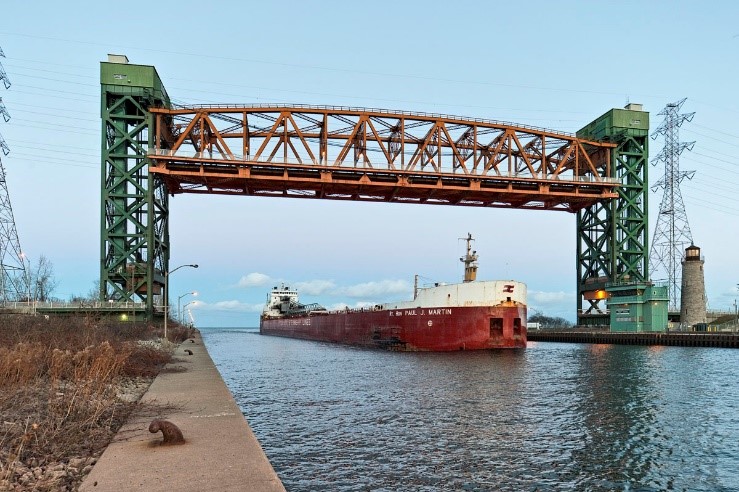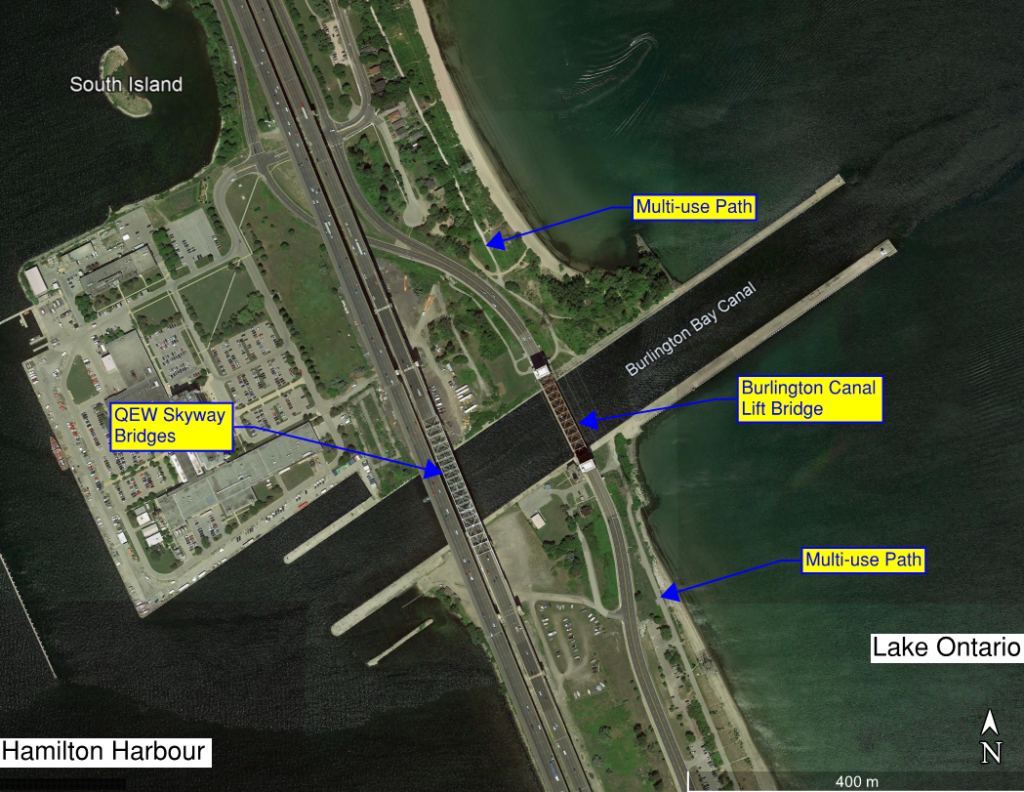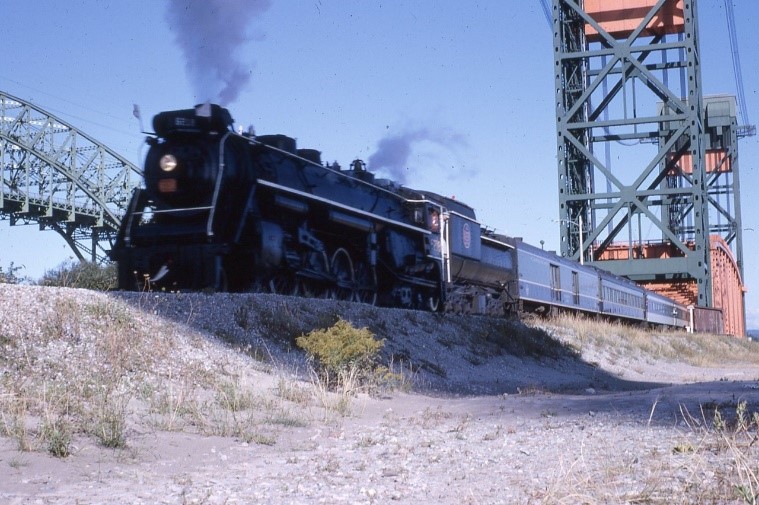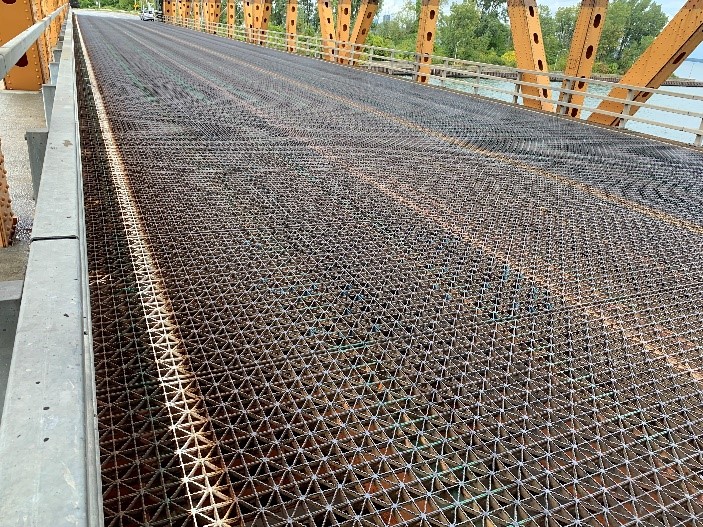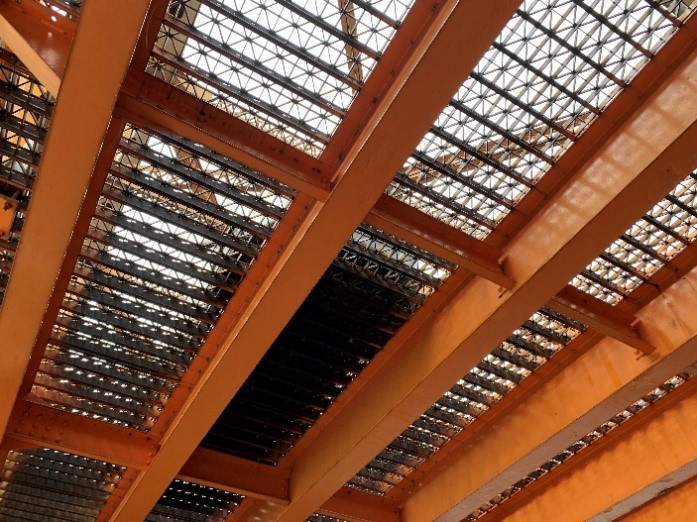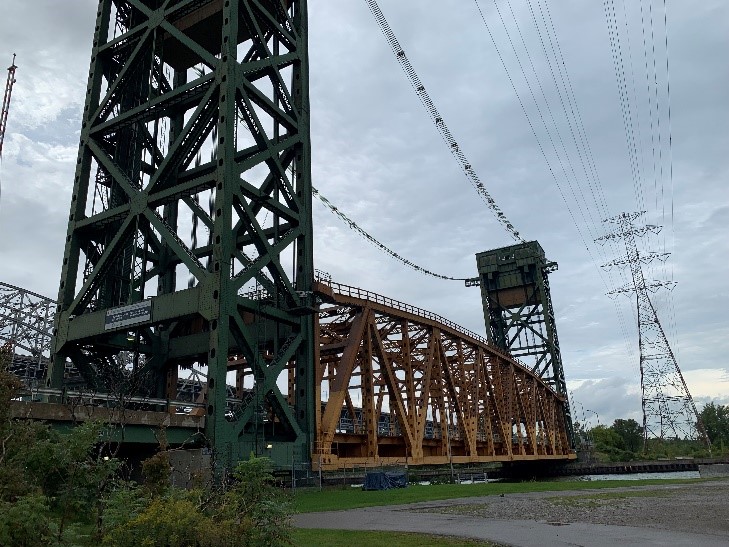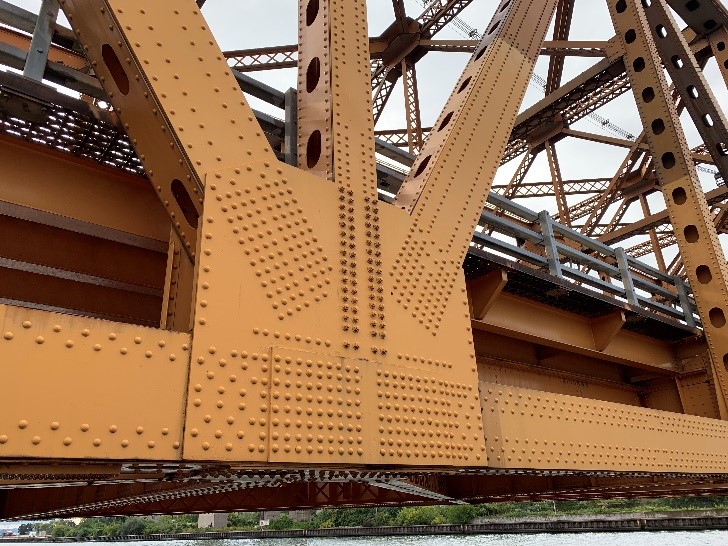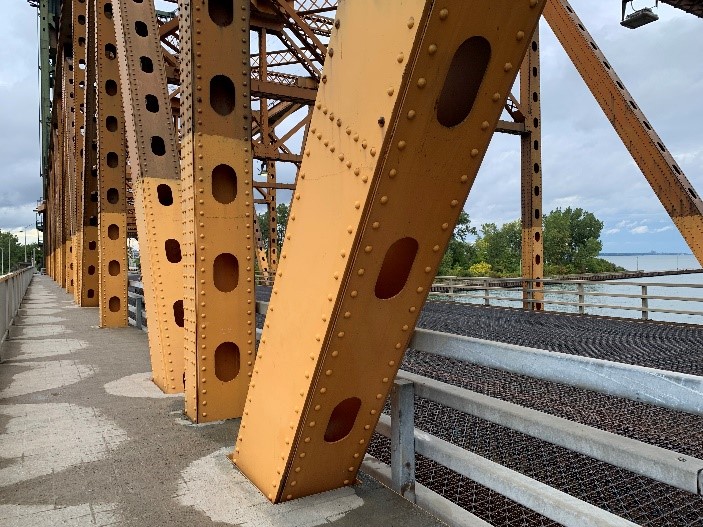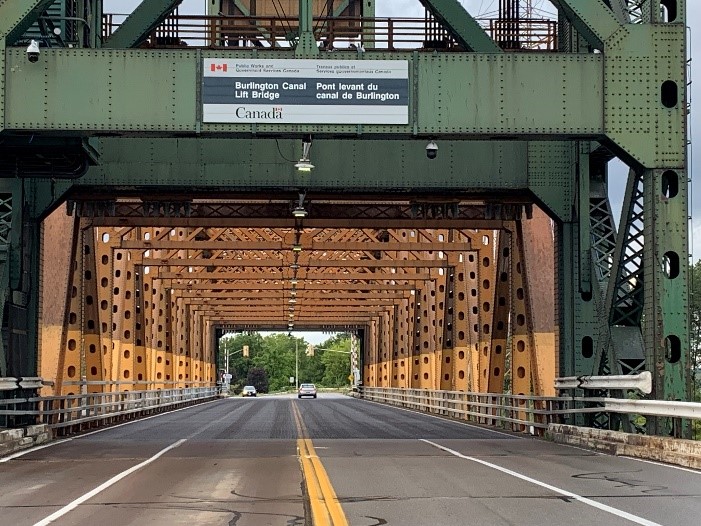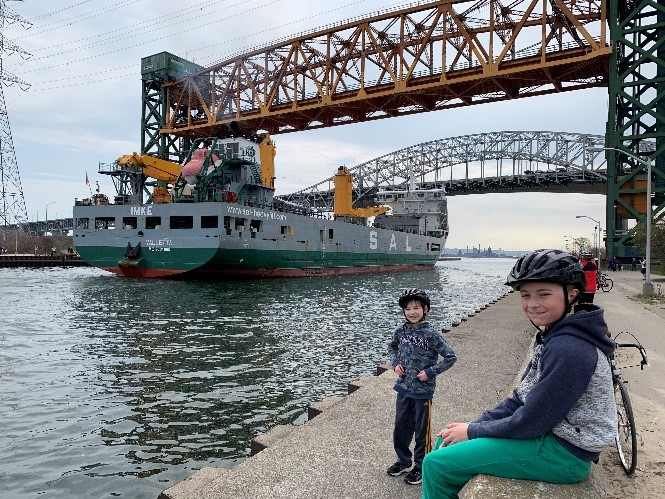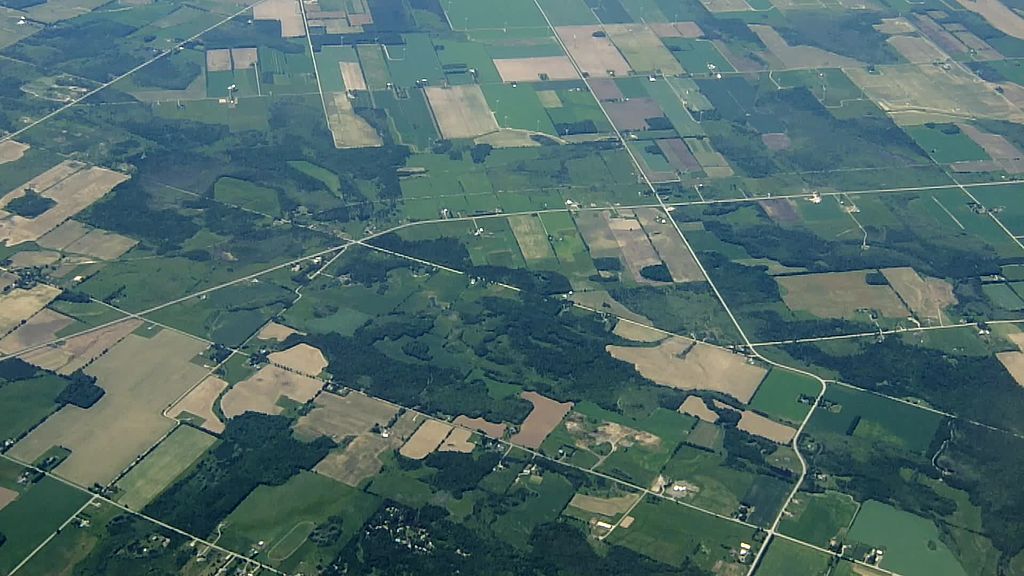If you’ve ever driven down the Lake Ontario coast through Burlington and Hamilton, then you’ve come across the Burlington Canal. This canal is a vital link between the City of Hamilton’s major manufacturing port facilities, the rest of the Great Lakes, and the rest of the world. Straddling this canal is a beautiful historical piece of infrastructure — the Burlington Canal Lift Bridge, with its tall truss towers and its trademark orange lift span. This canal sees a great amount of commercial and pleasure marine activity. And if you’re a ship or bridge enthusiast, you never get tired of watching a lift bridge in action and seeing cargo ships pass through.
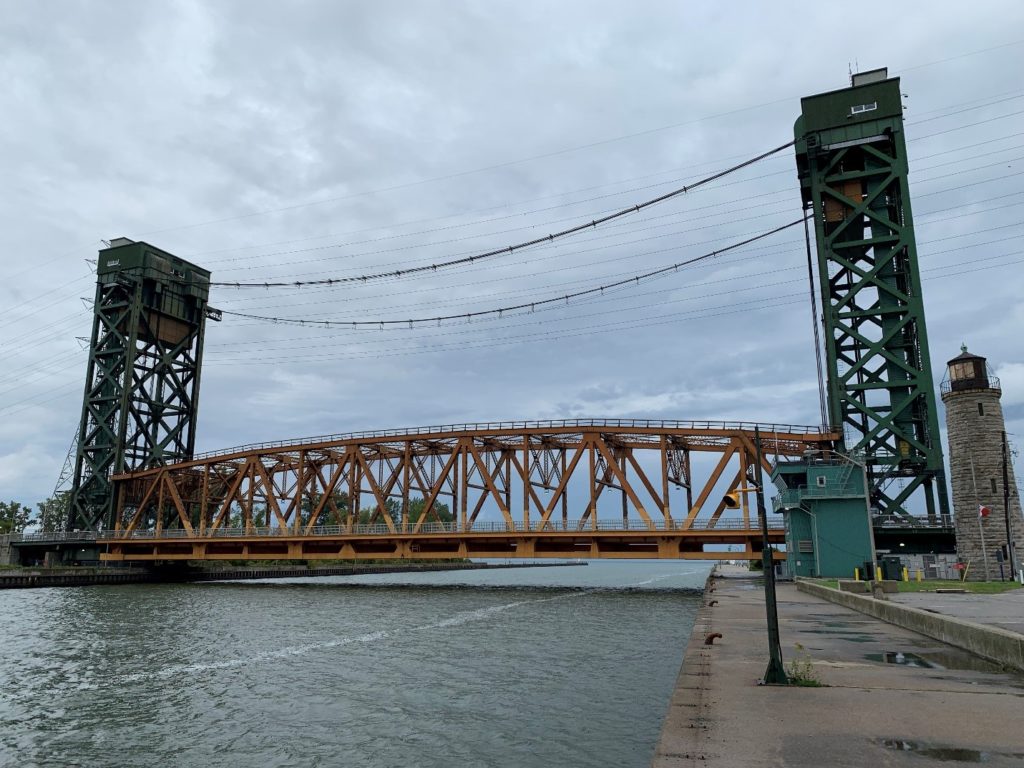
The Burlington Canal Lift Bridge, built and operated by the Canadian federal government, opened in 1962 and originally carried two lanes of traffic and a set of train tracks. The bridge is conspicuously perfectly in line with the multi-use path on either side of the canal next to the beach (see Fig. 2). This is because the path used to be the old railroad alignment to the bridge until the tracks were removed in 1982 and the road was widened to four lanes. The old railroad alignment became a bicycle path.
The bridge spans 116 m across the canal and clears 36.5 m when fully raised, allowing for some sizeable ships to access Hamilton Harbour from Lake Ontario (according to Public Services and Procurement Canada).
Lift bridges work much like elevators in tall buildings. The motors that lift the bridge span (the movable truss) don’t have to lift the whole weight of the span because they have counterweights that go down when the bridge goes up. The lift bridge has equal counterweights in each tower that total almost the same weight as the span. They’re tethered to the span so that when the bridge goes up, the counterweights come down, taking much less energy to raise the bridge (see Fig. 3). In fact, each tower has two 150-horsepower motors (less than your average pickup truck). While the bridge span weighs 2200 tons, the motors only lift a total of 14 tons.
Despite not needing much energy, the span must be as light as possible to reduce the size of the counterweights. This allows the towers to remain a reasonable size because they need to carry the weight of the bridge plus the counterweights. To keep the weight down, a lightweight steel grid decking is used instead of the typical concrete or asphalt paved deck (see Fig. 4). Driving across this deck creates a loud vibrating sound caused by the vehicle’s tires rolling on this grid decking. And looking down gives a view through the bridge deck to the water below because most of the decking is made of small openings. I suppose you can say the decking is mostly made of air.
Steel structures that were built prior to the 1960s are typically held together by rivets. Rivets were eventually completely phased out of the construction industry with the advent of steel beams, welding, and threaded bolts, which are much more efficient and much easier to use in bridge construction. Consequently, the Burlington Canal Lift Bridge shows signs of recent maintenance where some steel plates on the structure were replaced, possibly due to corrosion, and the rivets, of course, had to be replaced with bolts (see Fig. 5).
The series of cables spanning between the top of the two towers allow communication and power transfer between the motors in each tower, so they stay perfectly synchronized, keeping the lift span level during the entire travel to the top (see Fig. 5). Lifting it unevenly would jam the structure, stopping the movement of the bridge and potentially causing major damage!
Street salt used in the wintertime to maintain driving conditions on the roads is highly corrosive to steel. A common way to protect steel from salt exposure is to paint it — and paint it regularly! For this reason, the bridge deck and the truss always have a fresh coat of paint up to about 3 metres above the roadway where the steel is most subject to corrosion (see Fig. 6).
Operating between the months of March and December, the Burlington Canal Lift Bridge has been welcoming up to 1500 cargo ships and countless pleasure crafts to Hamilton Harbour every year, making it the perfect spot to sit in admiration of great infrastructure, and to wave at mariners from around the world.
Sources:
Public Services and Procurement Canada. n.d. Burlington Canal Lift Bridge. Url: https://www.tpsgc-pwgsc.gc.ca/ontario/burlington-eng.html (accessed Sept. 28, 2021).
About the author:
Eric Chiasson is a civil engineer by training and construction manager by trade. Having built infrastructure projects throughout Canada and the United States over the past 25 years, he has become a subject matter expert in infrastructure and construction. Eric is driven by curiosity to learn more about how things are built and how they work, encouraging others to join the ranks of those who design and build the infrastructure that makes living in our cities possible.


